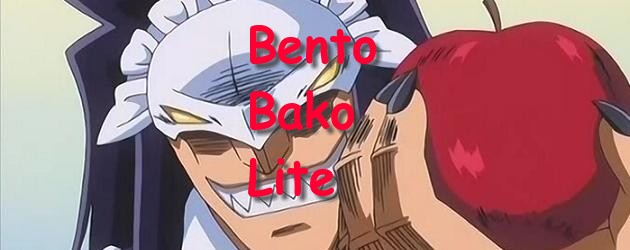 One Piece: Color Walk volume 2
One Piece: Color Walk volume 2
Publisher: Viz Media
Art and Writing By: Eiichiro Oda
One Piece: Color Walk volume 2 was a nifty little book, that for me was a little nostalgic. This second volume is part of the Art of Shonen Jump collection that collects and puts back in color all those title pages and pin-ups that were in color for the original Shonen Jump magazine, but ended up black and white in the collected editions. It also collects art used for the covers of the Shonen Jump magazine, early pre-One Piece color drawings by Oda, and an interview with Oda and one of his own manga idols, Motoo Abiko of manga duo Fujiko Fujio, who inspired him as a child.
I mention it was nostalgic for me because the color illustrations from One Piece in this volume are from 1999 to 2001. In the summer of 1999 I had just graduated from 8th grade and was preparing for high school, when I came across a shop locally that was importing Shonen Jump. I didn’t know Japanese aside from a little pocket Japanese-to-English dictionary that I’d picked up as my interest grew with anime, and I bought two issues of Shonen Jump on the same day, one with Zombie Powder on the cover (it was the first chapter of Zombie Powder in that issue), and the other had One Piece‘s Luffy on the cover (which in fact is the illustration on page 21 of this collection, with Luffy catching a fish). I bought and spent hour after hour trying to read through Japanese Shonen Jump with my dictionary in hand (this was pre-high school, I didn’t take Japanese until college), and for a few months was loving the adventures of One Piece, Zombie Powder, and (I have to admit) my favorite, Survi-Bee (note to Viz, release Survi-Bee here in the States, please), until my shop didn’t carry it anymore. A few years later they’d get Raijin Comics and the American version of Shonen Jump to my happiness, though.
As I said earlier, this is really just a chance to see all of Oda’s color illustrations in full color and on huge pages, and it looks great. Oda colors everything by hand still at this point (don’t know if that has changed 10 years later) and doesn’t use a computer on these, so you’re truly looking at works of art by hand. Also, the interview at the end where he talks to Fujio’s Abiko (who drew the classic Ninja Hattori-kun and helped the other half of his duo with famed Doraemon) is fascinating to read for both Oda-fans and fans of manga and anime in general.
So for $19.99, you really do get a gorgeous looking book packed with illustrations and a peek inside the mind of one of the coolest manga creators working today.
————————————–
 Toriko volume 7
Toriko volume 7
Publisher: Viz Media
Story and Art: Mitsutoshi Shimabukuro
Mitsutoshi Shimabukuro is one great author, and I’m glad Toriko seems to be emerging what appears to be successfully here stateside between the manga and the anime. Volume 7 of Toriko does something that I wasn’t expecting from a Shonen Jump manga; the editors in Japan let it get back to its roots for a little bit.
The past two volumes of Toriko turned into a typical fighting type of manga, which is the curse of most Shonen Jump manga. Suddenly, Toriko was less monster hunting and adventures and more who was fighting who each chapter. Well with the bad guys defeated, Toriko and his crew get the jewel meat they have been fighting so hard for and they have a little victory feast, packed with laughs, showing us how good this jewel meat is (the characters literally begin to shine as their cells rejoice with energy from it). After we get a quick run down about how everybody has to go back to their everyday lives, Toriko notices Terry isn’t eating. Does this lead to more fighting? Surprisingly, no! Toriko hears about the legendary BB Corn and thinks that may satisfy Terry’s hunger, and so Toriko and Terry adventure off to find this food. This gets us back to the adventure/monster fighting, feeling like we are back at the first volume again in a pure adventure manga. They go through the jungles, fight a variety of plant monsters, and I don’t want to give away if they successfully get the BB Corn or not, but the adventure getting there is fun. The volume ends with a cliffhanger as a new foe, the snake-like Grinpatch, suddenly appears on the scene with his giant-straw-sucking abilities and snake-like ways. Grinpatch lets slip to Toriko that the legendary ultimate food, a food so good it is only known as God, may appear soon. This would be fine if Grinpatch wasn’t from the rival-corp and out to kill Toriko, as a new fight begins.
So yes, it ends with a fight starting up again, but if Toriko rotates from a series of fights to adventures and back again on a cycle, I’d be happy with that. I just think Toriko is such a unique concept, and I don’t want it to evolve the way of Dragon Ball or the like and become a pure fighting manga, the world and monsters are just too cool. Getting back to the roots of the manga in this volume is just what we needed to refresh Toriko for us and remind us about the oddity of the series and its plot. Shimabukuro’s artwork is still great, he is wonderful at drawing all these monsters, and his humor and gags are out and about with much laughter throughout this volume, as well.
Toriko volume 7 has us back on track, and it’s recommended to check out this series about rare food, monsters, and fighting.
Drew McCabe
drew@comicattack.net
Review copies provided by Viz Media.

